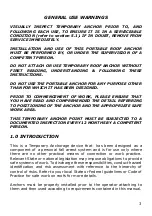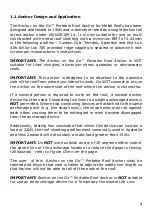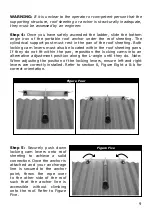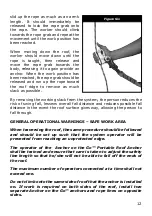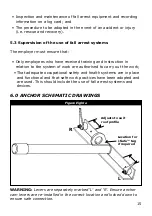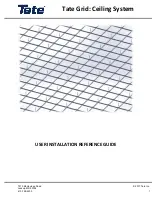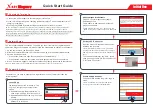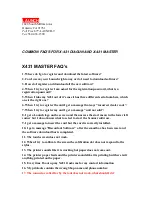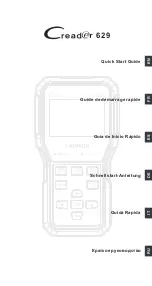
2.0 INSTALLATION
2.1 Installing Anchor on the Go™ on the roof
Step 1: Plan and prepare for the work to be undertaken. Complete a risk
analysis of the site to determine all the potential hazards. Consideration
should be given to work method statements, safe access, roof structure/
sheeting integrity, rescue procedure and so on.
Step 2: Inspect all equipment (Anchor on the Go™, Harness and any
associated Safety Equipment) prior to use to ensure it is within operating
period and is fit for purpose, free of damage etc. This process should
include a thorough inspection of structure to which the Anchor on the
Go™ will be installed. Refer to section 5.1 for inspection, care and
maintenance details.
Step 3: A safe means to access the intended temporary anchor installation
shall be provided.
Access to the roof will generally be by scaffold or ladder systems.
Scaffolding may only be erected, moved or disassembled by a competent
person and fall protection principles must be followed in those processes.
Further information can be obtained from AS/NZS 4576 Guidelines for
Scaffolding.
Where access is by ladder systems, the following items should be
checked:
• Inspect the ladder rungs and rails for any defects, cracks or corrosion.
• Never use a ladder with split or missing rungs or with oil or other
slippery material on the rungs.
• The ladder should be fitted with non slip feet.
• Place the ladder at a slope of 4 to 1, and secure at both the top and
bottom.
• Ascend and descend facing the ladder with both hands free to hold
the ladder.
• Always keep the area near the top and bottom of the ladder clear.
• Ladder side rails must extend 1m above the landing surface and be
7



